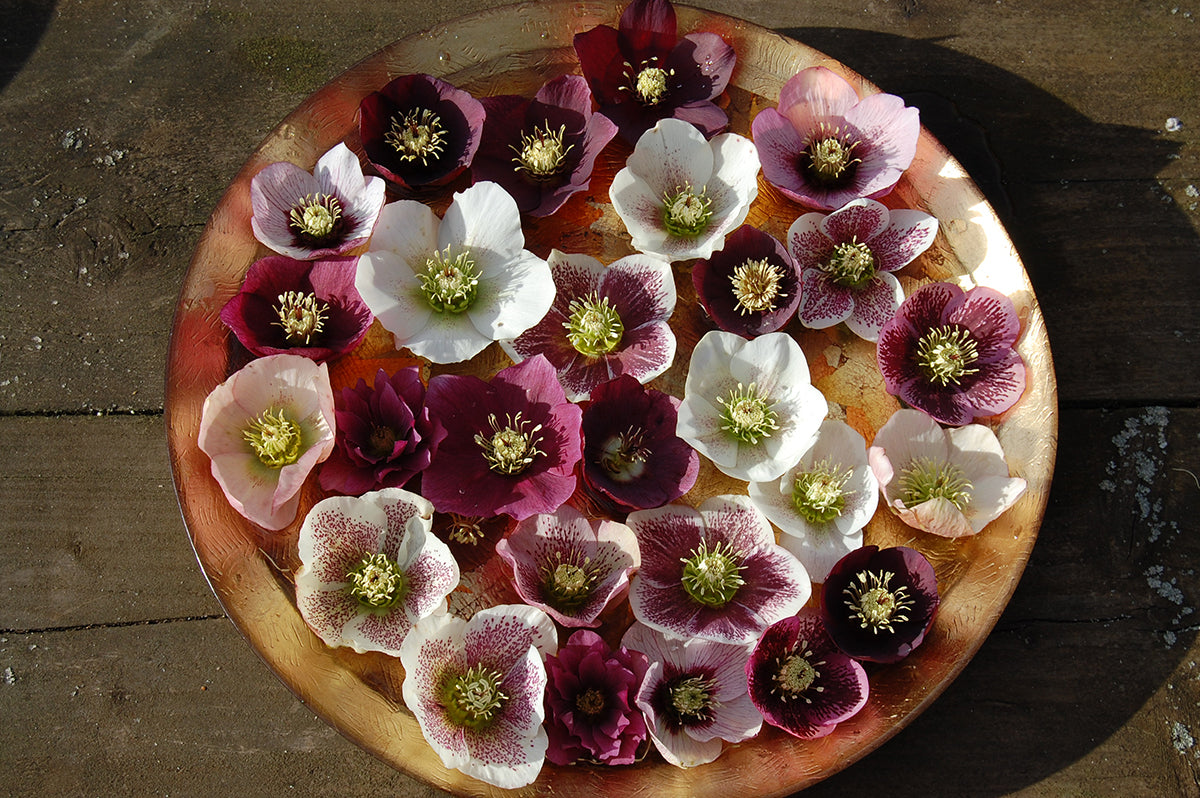Helleborus x hybridus - the reliable hellibore

Starting to flower at the end of winter, hellebores can continue to look good for months. These ones here, displayed in what I think is the best way to treat them as cut flowers, are all varieties of H. x hybridus, sometimes still sold as H. orientalis. They come in an amazing range of colours and patterns, including some mysterious purple-blacks and even greys! They are 'proper' perennials, forming slowly-expanding clumps and sometimes seeding, although the seedlings are often dark red in my experience, not necessarily reproducing the colour or patterning of the parent plant. Still very attractive plants and very good for shade.
So what's an 'improper' perennial then? Ok. Garden centres at this time of year often sell hellebores grown from micro-propagation which I call 'suicide hellebores' as they don't spread, can't be divided, don't seed and eventually die. And they cost a lot of money. And have big fancy plastic labels, sometimes bigger than the plant.
When buying a hellebore, look at the base, and if there are multiple shoots then you've got one that will give years of pleasure, but if there is only one shoot, growing straight up, then it's probably one of the 'terminator' varieties. The reliably perennial hellebores are now always seed-grown, so they often don't have a cultivar name, and the flowers are all slightly different, so it's good to get one in flower.
And if you want to grow more from seed, watch the seed pods. In June pounce on them before they burst open, sow the seed immediately, and wait until early next spring for germination.







